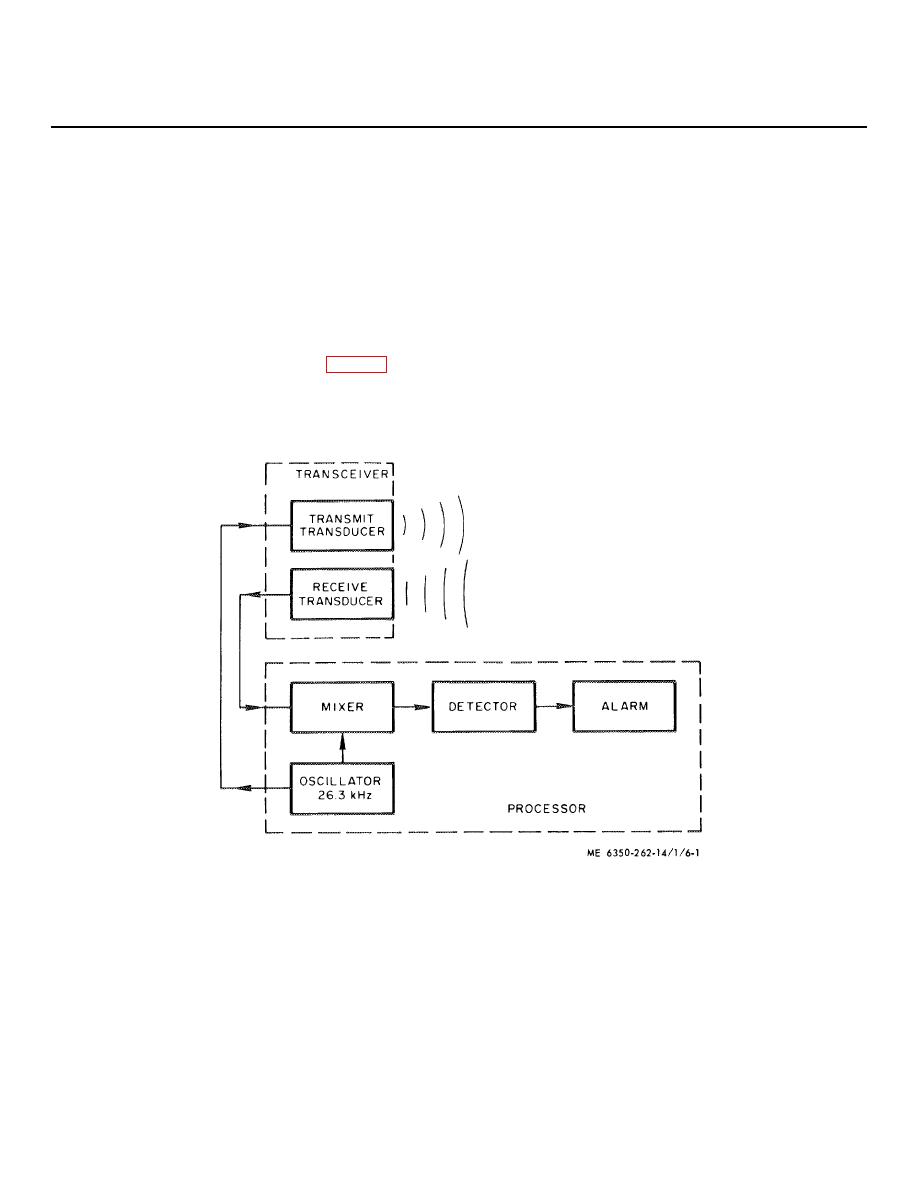 |
|||
|
|
|||
|
Page Title:
Chapter 6 FUNCTIONING OF EQUIPMENT |
|
||
| ||||||||||
|
|
 CHAPTER 6
FUNCTIONING OF EQUIPMENT
Section I. FUNCTIONAL OPERATION
The transmit transducer emits an ultrasonic signal
6-1. General
throughout the surveyed area. With no intrusion in the
area, the receive transducer picks up the 26.3 kHz
The Processor/transceiver ultrasonic motion signal
signal without change in frequency (Doppler). The
senses motion by a new adaptation of the commonly
received signal is mixed with the basic oscillator signal
used Doppler technique. The circuits employed respond
and when coincident, there is no detection and no alarm.
only to unidirectional motion. The equipment is able to
When an intruder enters the area and moves toward the
differentiate between actual intruder motion and
transducer, the frequency increases (closing Doppler)
conditions which may produce nuisance alarms in
and a movement away from the transducer causes the
conventional Doppler ultrasonic equipment.
frequency to decrease (receding Doppler). In either a
closing or receding Doppler, the received signal mixed
6-2. Simplified Functional Operation (fig. 6-1).
with the oscillator results in a difference signal output to
the detector. The detector actuates the alarm.
a. The processor/transceiver ultrasonic motion
signal contains a 26.3 kHz oscillator which drives the
transmit transducer and the signal mixer circuit.
Figure 6-1. Processor/transceiver ultrasonic motion signal - simplified block diagram.
b. In normal operation (no motion detected) the
lower frequency sides of the return signal. Alarms will
not be activated when the return signal spectra are
alarm relay is in an energized state and upon detecting
nearly balanced with respect to the transmitted signal.
a motion the alarm relay is de-energized. Therefore,
Alarms will be activated when the return signal spectra
loss of dc power to the processor, whether due to local
is unbalanced by a prescribed amount with respect to
power failure, cable damage, circuit fault, etc., results in
the carrier. Unbalanced returns occur when an intruder
the de-energizing of the alarm relay which signals an
moves either toward or away from the transceiver.
alarm. Spurious signals causing nuisance alarms have
been virtually eliminated by balancing the upper and
6-1
|
|
Privacy Statement - Press Release - Copyright Information. - Contact Us |